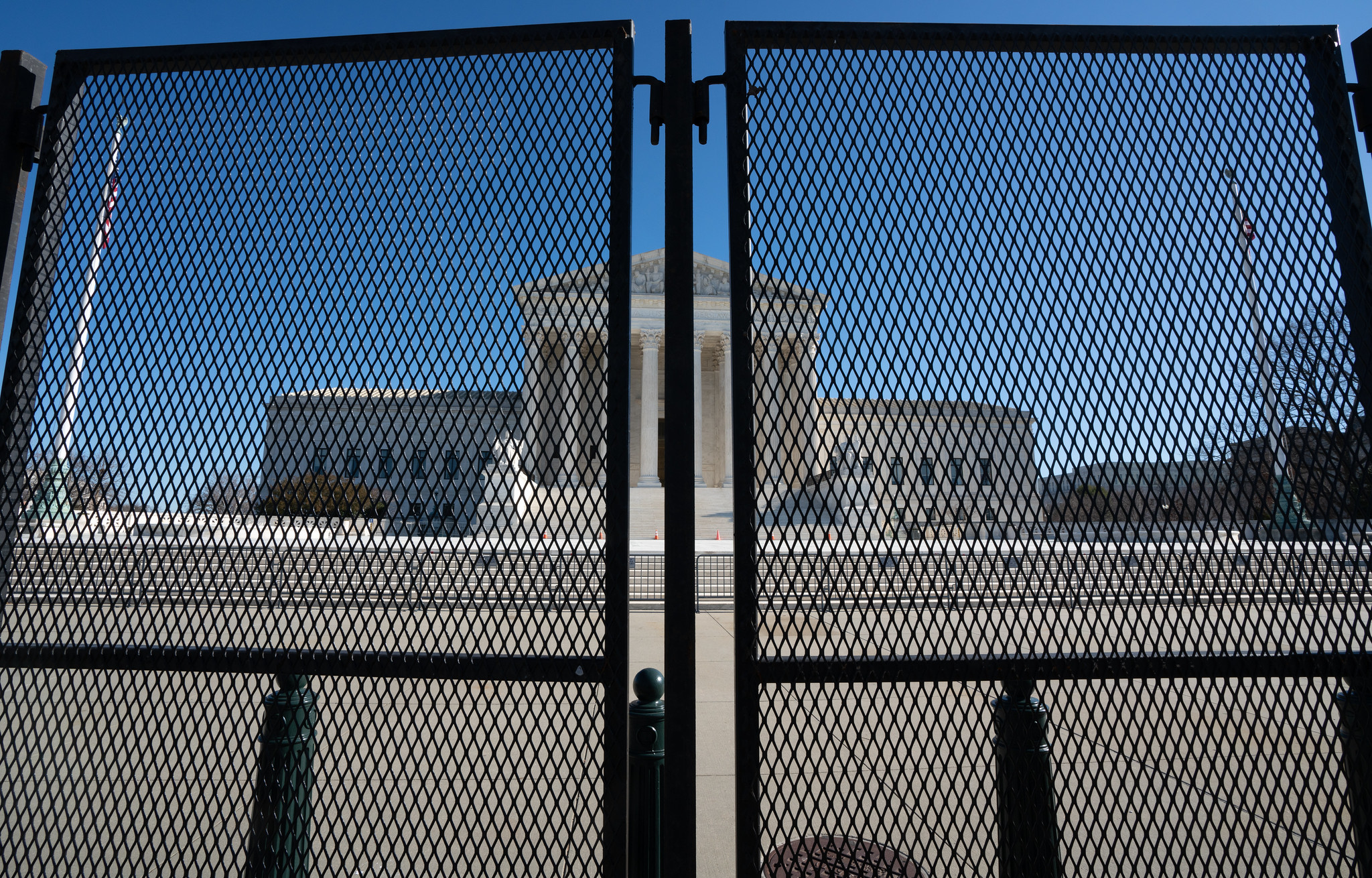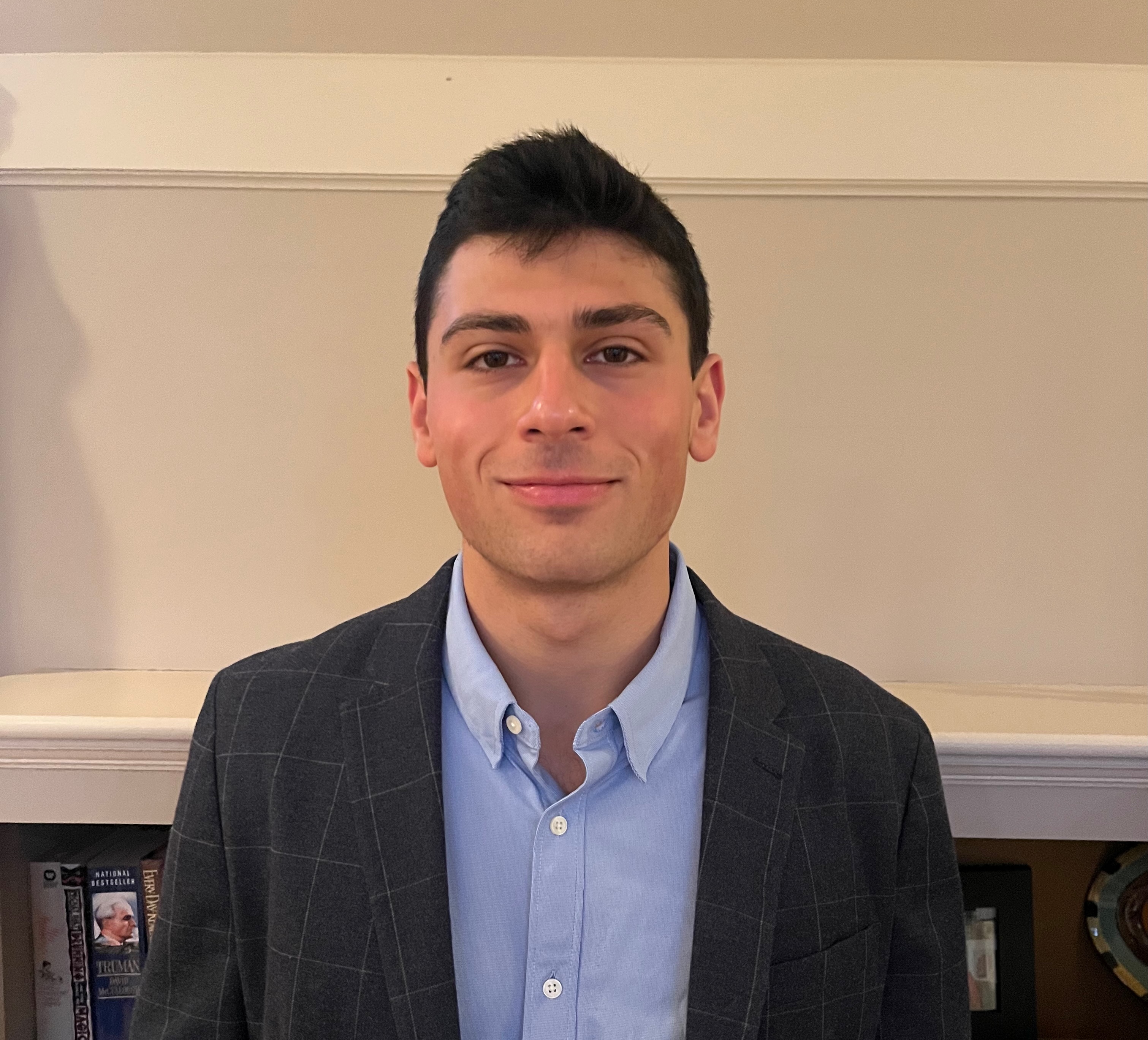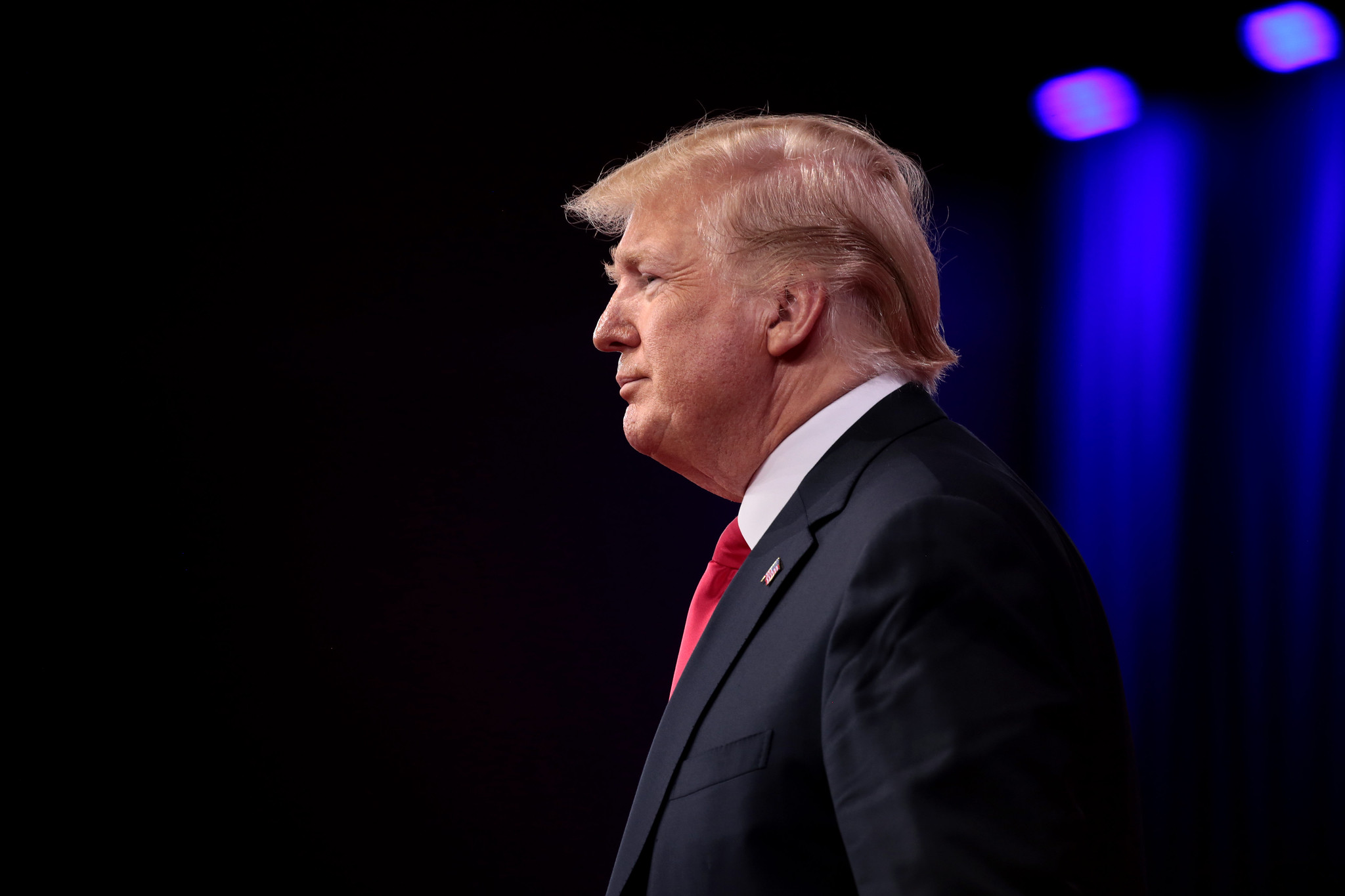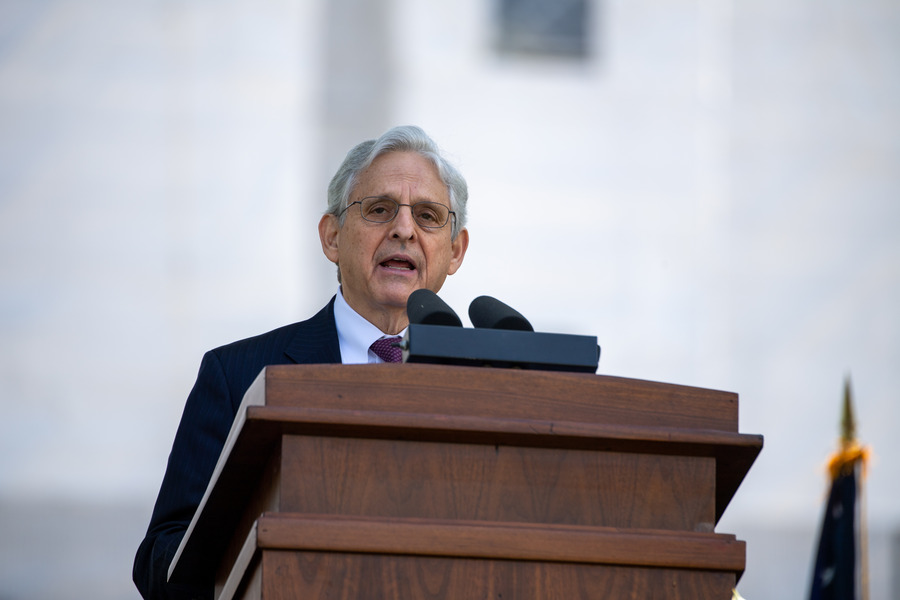The Supreme Court’s Presidential Immunity Decision

Published by The Lawfare Institute
in Cooperation With

The Supreme Court handed down its highly anticipated decision in the presidential immunity case, Trump v. United States, arising out of the Jan. 6 criminal prosecution brought by Special Counsel Jack Smith against former President Trump. The 6-3 decision split the justices along traditional ideological lines, with Chief Justice John Roberts writing for the majority, two concurring opinions, and two dissenting opinions.
The 119-page decision affords the executive immunity from criminal prosecution for “official acts” in two layers—core constitutional acts that are absolutely protected, and presumptive immunity for official acts that are not core that can be overcome only if the government can show that applying a criminal prohibition on that act wouldn’t encroach on the functions of the executive branch. Unofficial acts are not protected.
The following is a summary of the arguments in each of the Court’s opinions.
Chief Justice John Roberts’s Majority Opinion
The majority opinion establishes a three-tiered standard for evaluating immunity claims in criminal prosecutions of former presidents. First, the Court holds that a former president enjoys absolute immunity from criminal prosecution “for conduct within his exclusive sphere of constitutional authority.” Second, a former president enjoys “at least a presumptive immunity from criminal prosecution for a President’s acts within the outer perimeter of his official responsibility.” Third, a former president enjoys no immunity for “unofficial” acts.
The Court maintains that, generally speaking, neither Congress nor the courts have the authority to limit the president’s exercise of “core” authorities the Constitution guarantees to the president—such as the president’s power to pardon and remove executive officers. Congress, with a few exceptions, may not limit these presidential authorities through specific or generally applicable statutes.
The majority frames its analysis by describing the framers’ conception of the presidency. Chief Justice Roberts writes that the framers sought to empower a single constitutional officer with “ultimate authority” to “encourage energetic, vigorous, decisive, and speedy execution of the laws.” According to the majority, the framers believed this energy would enable the president to guard the United States from foreign attacks, properly administer the nation’s laws, and protect the people’s property and liberty. In order to fulfill these duties, the president would need “‘the maximum ability to deal fearlessly and impartially with’ the duties of his office.” The majority notes, though, that while the framers’ conception of a powerful presidency supports its immunity framework, “relevant historical evidence on the question of Presidential immunity is of a ‘fragmentary character,’” and therefore it must rely more fundamentally on separation of powers principles and prior rulings defining those principles.
Chief Justice Roberts notes that the Court has dealt with the issues presented in this case on only a few occasions. Therefore, the Court must look primarily to the framers’ arrangement of the presidency and these few decisions.
Unofficial actions do not necessitate the protection the majority affords to official acts because, the Court writes, the purpose of providing immunity to presidents is not to protect the president “because he is the President.” Instead, presidential immunity is meant to “ensure that the President can undertake his constitutionally designated functions effectively, free from undue pressures or distortions.” Therefore, conduct that does not advance or undergird the president’s constitutional role need not be protected.
Moving past core executive authorities, the majority describes the balancing test it uses—drawing on Nixon v. Fitzgerald and, to a lesser extent, United States v. Nixon—to generate the standard for immunity from prosecution for other official acts. On one side of the ledger is the desire to enable the president to take the “bold and unhesitating action” required for the office. On the other side is the value of enforcing federal criminal law. Weighing these interests, the Court determines that “the separation of powers principles explicated in our precedent necessitate at least a presumptive immunity from criminal prosecution for a President’s acts within the outer perimeter of his official responsibility.” The majority writes that it need not decide in this case whether official acts necessitate absolute immunity. Without this cone of protection, according to Chief Justice Roberts, the presidency would be bound by “undue caution.”
Perhaps nearly as significant as the Court’s guarantee of “presumptive immunity” is the guidance it prescribes for the government to overcome that presumption. It writes, “At a minimum, the President must therefore be immune from prosecution for an official act unless the Government can show that applying a criminal prohibition to that act would pose no ‘dangers of intrusion on the authority and functions of the Executive Branch’” (emphasis added). This standard-within-a-standard will guide lower court analysis when these courts conduct the fact-specific assessments the majority requires, as Lee Kovarsky noted during Lawfare’s discussion of the decision.
The majority compares the present case to United States v. Nixon and Nixon v. Fitzgerald. The former concerned a dispute over a subpoena to former President Nixon for tape recordings and documents concerning discussions with his staff. In that case, the Supreme Court rejected Nixon’s claim of “absolute privilege,” but it found a “public interest in candid, objective, and even blunt or harsh opinions in Presidential decisionmaking” and a need to safeguard “communications between high Government officials and those who advise and assist them in the performance of their manifold duties.” That interest, paired with a “need for complete candor and objectivity from advisers” formed the basis for the Court’s guarantee of a “presumptive privilege” for presidential communications.
The other Nixon case, Fitzgerald, concerned a civil lawsuit brought by an Air Force employee against the former president after Nixon’s reorganization of the Air Force allegedly led to the employee’s firing. In that case, the Court held that to prevent “diversion of the President’s attention during the decisionmaking process caused by needless worry as to the possibility of damages actions stemming from any particular official decision,” it was necessary to guarantee to the president absolute immunity from “damages liability for acts within the ‘outer perimeter’ of his official responsibility.”
The Court writes that the separation of powers concerns raised by the two Nixon cases are not as severe as those at play in this case because the threat of criminal punishment is more likely to constrain presidents from acting than is either the threat of the release of documents or civil prosecution. There, according to the majority, the need for immunity to provide the president with appropriate “energy” is more salient here than in those two cases.
After describing the Court’s new presidential immunity standard and the principles underlying it, the majority explains how to operationalize its standard and applies it to some of the government’s allegations against former President Trump. The majority states that the first step in determining whether presidential immunity shields former presidents from prosecution is to distinguish official conduct from unofficial conduct. Official conduct is that which the president takes pursuant to “constitutional and statutory authority.”
Chief Justice Roberts writes that some conduct is official even when it is not obviously connected to a particular constitutional or statutory provision”—such as speaking to the public. Because of this ambiguity, the Court extends the president’s immunity to the “‘outer perimeter’ of the President’s official responsibilities,” which includes all presidential conduct that is “not manifestly or palpably beyond [his] authority.” The majority notes that a court may not determine that an action is unofficial just because the conduct violates a generally applicable statute.
The Court also argues that in “dividing official from unofficial conduct, courts may not inquire into the President’s motives.” Chief Justice Roberts asserts that exposing presidential conduct to prosecutorial examination “on the mere allegation of improper purpose” would wipe away the protections and undermine the separation-of-powers safeguards that are at the foundation of the Court’s decision.
Turning to the specific allegations against Trump, the Court determines that some are clearly protected by immunity, while others will require fact-specific analysis.
The indictment alleges that former President Trump sought to use the Justice Department to convince certain states to swap out their legitimate electors for fraudulent electors that would cast their votes for Trump. The government alleges that Trump met with Justice Department and White House officials to discuss an investigation of claimed election fraud and the sending of a letter from the Justice Department to states claiming that purported fraud had taken place. When the acting attorney general rebuffed Trump’s requests to carry out this scheme, according to the indictment, Trump threatened to fire him multiple times.
The majority maintains that these allegations cover actions taken within the president’s “conclusive and preclusive” presidential power—and thus receive absolute immunity under the Court’s framework. The president, according to the Court, has “exclusive authority” over the investigation and prosecution of crimes. These communications with Justice Department officials fall within this shadow of immunity, and Trump may not be prosecuted for them.
Unlike the alleged Justice Department scheme, Trump’s communications with former Vice President Pence are not clearly immune, according to the majority. Chief Justice Roberts writes that as a general matter, the president’s communications with the vice president are important to the presidency, as the vice president is a close adviser to the president and the vice president is next in the line of succession. The majority holds that Trump is presumptively immune from prosecution for any discussions he had with Pence about the official conduct of either the president or the vice president. Therefore, discussions Trump had with Pence related to Pence’s counting of the electoral votes receive presumptive immunity—as counting the electoral votes is the vice president’s constitutional duty under Article II, Section I, of the Constitution. A court evaluating whether Trump should receive immunity for those discussions must conduct the fact-specific analysis to determine whether opening the door to prosecution under these circumstances would pose “dangers of intrusion on the authority and functions of the Executive Branch.”
The majority lays out two arguments it says the government could employ to overcome the presumptive immunity burden with respect to Trump’s conversations with Pence. It notes that the president has no “direct constitutional or statutory role” in the vote-counting process and that Congress has legislated significantly to delineate the vice president’s role in electoral vote counting.
The majority explains that the remaining allegations against the former president relate to Trump’s communications with individuals outside of the executive branch. These communications include those with state officials, campaign staff, and others to execute the fake electors plot, and Trump’s activities related to Jan. 6 itself—including tweets encouraging his supporters to go to Washington on Jan. 6 and Trump’s speech at the ellipse. The Court describes the nature of the considerations that should comprise the analyses of whether Trump’s actions are official. But the majority writes that, ultimately, lower courts must resolve whether these actions are official through examinations of the allegations that account not only for their particulars but also for their surrounding circumstances.
After discussing these specific components of the government’s case against Trump, the majority extends its official conduct standard to the introduction of evidence. Chief Justice Roberts determines that “official conduct,” which garners presumptive immunity under the Court’s framework, may not be used as evidence of other crimes when prosecuting former presidents. The majority writes that permitting the examination of official conduct in the prosecution of a former president would defeat the purpose of the Court’s provision of immunity for this same conduct. According to Roberts, “[u]se of evidence about [official] conduct, even when an indictment alleges only unofficial conduct, would thereby heighten the prospect that the President’s official decisionmaking will be distorted.”
The majority acknowledges the government’s argument that excluding this evidence is unnecessary because the district court can reliably exclude harmful evidence through evidentiary rulings and jury instructions. According to the majority, while those protections may be sufficient to safeguard the rights of individual defendants, they do not meet the higher bar of protecting “the institution of the Presidency.” The majority notes that although prosecutors may not “admit testimony or private records of the President or his advisers probing” the president’s official conduct, prosecutors may point to the public record to introduce evidence of former presidents’ official conduct that could shed light on prosecutable behavior.
Next, the Court easily disposes of Trump’s argument that the Impeachment Judgment Clause in Article I, Section III, of the Constitution precludes his prosecution. Trump has argued that the clause, which says that presidents convicted in impeachment proceedings “shall nevertheless be liable and subject to Indictment, Trial, Judgment, and Punishment,” prevents the prosecution of presidents who were not impeached and convicted by the Senate. According to Chief Justice Roberts, Trump’s claim “finds little support in the text of the Constitution or the structure of our Government.”
The majority then categorically rejects the government’s argument that broad immunity for former presidents is not necessary because of the presence of significant safeguards throughout the trial process—including Justice Department regulations and norms prohibiting abusive prosecutions, grand juries, procedural rights guaranteed during trial, and the “reasonable doubt” standard of proof. Additionally, the government asserts that “as-applied challenges” during the trial and post-trial review of the adjudication of those challenges are sufficient to address concerns about infringement on Article II interests, and that former presidents have defenses during trial that are available on top of those available to other defendants.
But the problem for the government, according to the majority, is that if presidential immunity exists, the president is not supposed to face the criminal process for conduct that is immune: “[U]nder our system of separated powers, criminal prohibitions cannot apply to certain Presidential conduct to begin with” (emphasis added). Therefore, the extent to which these mechanisms protect the presidency is almost entirely meaningless to the majority because once immunity kicks in, these components of the criminal process are not supposed to apply to the president and are therefore irrelevant.
Concurring Opinion of Justice Clarence Thomas
Justice Clarence Thomas’s concurring opinion addresses an issue that’s a bit of a tangent from the case itself. He writes that there is another way that the prosecution of former President Trump “may violate our constitutional structure”: The appointment of Jack Smith as special counsel, he argues, may not be legally proper. He explains that he isn’t “sure” that any office for the special counsel has been “established by law” pursuant to Article II of constitution, which mandates that Congress (notably not the president) create federal offices “by Law.” Therefore, he explains, if there is no law establishing the Special Counsel’s Office, then the special counsel is not authorized to prosecute the former president.
Thomas’s concurrence asks the lower courts to answer two “essential questions” about the special counsel’s appointment before proceeding with decisions regarding whether each of the government’s allegations against Trump constitutes an official or unofficial act. His first question zeroes in on the Appointments Clause of the Constitution, which specifies that for the president or head of a government agency—such as the attorney general—to appoint a person to fill any office, that office must be “established by Law”—meaning established by the Constitution or by Congress.
The distinction here, Thomas argues, is that while he can fill offices, the president is not afforded the power to create offices. Thomas—citing founding documents such as Thomas Paine’s “Common Sense” and Federalist 69—argues that the founders, after their experiences with the English monarchy, placed this limitation on the president’s power to avoid a situation in which the executive might “unilaterally create an army of officer positions to then fill them with his supporters.” Justice Thomas contends that if Congress has “not reached a consensus that a particular office should exist, the Executive lacks the power to create and fill an office of his own accord.”
The second “essential” question Thomas directs to the lower courts for consideration is whether the special counsel is an office “established by Law.” He explains that when Attorney General Merrick Garland appointed Smith, he failed to identify any existing statute that creates an office of special counsel, or a statute granting him the authority to appoint officers as he sees fit. Rather, Thomas writes, Garland cited various statutes of a “general nature,” none of which “appear[] to create an office for the special counsel.” Justice Thomas continues on to say that even if the special counsel had a “valid office,” there are still questions about whether Garland filled it in accordance with the Appointments Clause. He asserts that the appointment of the special counsel is, in fact, “invalid unless a statute created the Special Counsel’s office and gave the Attorney General the power to fill it ‘by Law.’”
Justice Thomas concludes his concurrence by emphasizing that while the Constitution “provides for ‘an energetic executive,’” it also “secures liberty by separating the powers to create and fill offices.” He insists that the above questions be answered before the prosecution of Trump moves any further, and he argues that “we must respect the constitution’s separation of powers in all its forms,” or else “we risk rendering its protection of liberty a parchment guarantee.”
Note that this very argument is currently before Judge Aileen Cannon in the Florida case against Trump. Anna Bower covered the argument before Judge Cannon in this dispatch last week.
Concurring Opinion of Justice Amy Coney Barrett
Justice Amy Coney Barrett, concurring in part, explains that she understands the courts ruling granting the president “immunity” to reflect two distinct ideas: that the president “can challenge the constitutionality of a criminal statute as applied to official acts alleged in the indictment, and he can obtain interlocutory review of the trial court’s ruling” on those challenges. What’s more, she writes that while the court “leaves open the possibility” that the Constitution prohibits “prosecuting the president for any official conduct”—therefore instructing the lower courts to make this determination—Barrett thinks the court should address that question now.
To assess the validity of criminal charges as applied to most of the president’s official acts, Justice Barrett would have the court lay out two steps. The first, she explains, is to determine whether the criminal statute in question “reaches the President’s official conduct.” Barrett points to 18 U.S.C. § 956—conspiracy to kill, kidnap, or injure a person or property in a foreign country—as an example, as the statute does not “expressly exclude the president’s decision to, say, order a hostage rescue mission abroad.” However, § 956(a)—the underlying murder statute—she writes, covers only “unlawful killings.” And the Justice Department’s Office of Legal Counsel has read this to reflect a “public-authority exception for official acts” that involve the military or law enforcement. In other words, the statute has been read to not cover the president’s killing of people abroad in an otherwise lawful military action.
Once a court has determined this “threshold question of statutory interpretation” and that the statute in question covers the alleged official conduct, the prosecution is permitted to continue only if applying the statute “poses no ‘dange[r] of intrusion on the authority and function of the Executive Branch.’” Barrett further asserts that, on remand, lower courts should apply that standard to all the prosecution’s allegations regarding the president’s official acts.
Justice Barrett goes on to say that this two-step analysis—“considering first whether the statute applies” and, second, “whether its application to the particular facts is constitutional”—is very similar to the special counsel’s approach in this case, as well as the Court’s own approach to considering the validity of statutes in cases that raise constitutional questions. But she insists on an important distinction that makes this a matter of immunity, not of simple statutory interpretation: In this context, she argues, the president is “entitled to an interlocutory appeal of the trial court’s ruling.” She explains that while a criminal defendant normally has to wait until after trial to seek review of a trial court’s refusal to dismiss the charges against them, in situations where the trial itself threatens constitutional interests, the Court is to treat the trial court’s decision as a “‘final decision’ for purposes of appellate jurisdiction.”
This case, Barrett asserts, thus “falls squarely within” the Court’s precedent authorizing interlocutory review. When a president moves to dismiss an indictment under Article II, he “contests whether the Constitution allows Congress to criminalize the alleged conduct,” which is a question “that is ‘collateral to, and separable from’ his guilt or innocence.” Justice Barrett also writes that if an appellate review of the constitutional challenge were delayed until after a president’s conviction and sentencing, his or her executive branch authority would be “significantly undermined” and this approach thus poses a “unique danger” to the “independence of the Executive Branch.” In short, while Article II issues do not fully shield a president from prosecution, they do “justify interlocutory review of the trial court’s final decision on the President’s as-applied constitutional challenge.”
Where Barrett strays from the majority opinion, however, is that she does not sign to Roberts’s finding in Part III-C, which “holds that the Constitution limits the introduction of protected conduct as evidence in a criminal prosecution of a president, beyond the limits of executive privilege.”
Justice Barrett asserts that she disagrees with the majority's holding and instead agrees with Justice Sonia Sotomayor’s dissent. To make this point, she offers a hypothetical: If a president is prosecuted for bribery, the federal bribery statute prohibits public officials from “seek[ing] or accept[ing] a thing of value ‘for or because of any official act.’” And since the Constitution does not grant the president the authority to accept bribes, he is eligible to be prosecuted under this statute if he does so.
Under the majority opinion in Part III-C, however, any mention of the president’s official act would have to be excluded from trial. “To make sense of the charges alleging a quid pro quo,” she writes, “the jury must be allowed to hear about both the quid and the quo, even if the quo, standing alone, could not be a basis for the President’s criminal liability.” Justice Barrett writes, what evidence is and is not permitted relating to a president’s official acts should be handled on a case-by-case basis. “I see no need to depart from that familiar and time-tested procedure here,” she writes.
Justice Sonia Sotomayor’s Dissent
The main dissent, penned by Justice Sonia Sotomayor and joined by Justices Elena Kagan and Ketanji Brown Jackson, condemns the majority’s immunity allowances and writes that they are “disastrous” for democracy. Justice Sotomayor writes that the scope of the majority’s decision, in its insulation of presidents to escape criminal accountability “reshapes the institution of the Presidency.” The majority “invents immunity through brute force,” she writes. According to Sotomayor’s dissent, the majority opinion has no meaningful textual or precedential support.
Justice Sotomayor argues that the majority achieves this in three moves. The first is the creation of a category of actions deemed “core constitutional powers” that, when applied to the facts of the indictment, expands the core powers concept “beyond any recognizable bounds.” The next move, she says, goes further to create a presumption of immunity for all official acts, which can be overturned only if the government can show that prosecuting such acts would not pose “dangers of intrusion on the authority and functions of the Executive.” What kind of prosecution might not pose dangers in the Court’s estimation, writes Sotomayor, is a mystery. Notably, she writes that this presumption of immunity also encompasses the core activities. This presumption of immunity functionally nullifies any meaningful distinction between official and unofficial acts, she argues, because the majority requires that for actions to be unofficial, they must be “manifestly or palpably beyond [the president’s] authority”—and it asserts that motive cannot be used in determining the dividing lines between those two categories.
“Under the majority’s test, if it can be called a test, the category of Presidential action that can be deemed ‘unofficial’ is destined to be vanishingly small,” Sotomayor writes.
The third move is the majority’s procedural restrictions on prosecutions: preventing the use of evidence concerning a president’s actions for which he is immune from being used at trial. That applies even if the prosecution has to do with private crimes committed in office, though the majority says it would allow a private-acts prosecution against a president. Such restrictions have no basis in law, writes Sotomayor, pointing to the First Amendment context as an example where criminalizing speech is protected but evidentiary use of protected speech is permitted. She questions the majority’s concern of a “unique risk” of undue bias from a jury that the president needs to be protected against.
So, according to the main dissent, where does the majority get the grounds for its decision? Sotomayor spends considerable time delineating how presidential immunity cannot be gleaned from the text of the Constitution, or from the founders’ interpretations of the contours of the presidency, or from any conception of immunity recognized by any former sitting presidents or executive branch lawyers—including former President Trump’s lawyers during his second impeachment trial.
Justice Sotomayor finds that the Court has only “one arrow in its quiver” in defense of its holding: the balancing test of Fitzgerald, in which it balanced the interest in having legal jurisdiction over the president against the president’s need for freedom in performing his duties and found immunity in the civil context. But the Court errs, she argues, in giving too much weight to the executive’s need for freedom in action to fulfill his duties, such that the other half of the balancing test is essentially erased. What’s more, there are meaningful differences between civil suits and criminal prosecutions that help show why this is the wrong approach, Sotomayor writes. Criminal liability is much less likely to haunt the actions of a president than civil liability is, for example, as the criminal process provides far more robust protections for defendants than civil suits do. And on top of that, she contends, presidents have legal arguments unavailable to the typical criminal defendant.
Another difference between civil and criminal prosecution of presidents, Sotomayor points out, is the different levels of and modes of public interest: There is huge public interest in federal criminal prosecution of a president, whereas there is relatively little interest in a private civil suit against a president. And, writes Sotomayor, the Article II responsibilities of the president that Fitzgerald sought to protect are particularly knotted up in the case of the Trump indictment, since the very acts for which the prosecution hopes to hold the former president accountable involve intervening in the public’s ability to democratically vote for a president. Surely, she argues, the president doesn’t get immunity when, while “taking care” to carry out the laws, he allegedly broke the laws himself.
Indeed, Sotomayor ends her dissent with the determination that the application of the majority’s new theory of immunity to the case at hand may be more troubling than the new theory of immunity itself.
The majority, after all, wants to declare Trump’s conduct surrounding the Justice Department and vice president to be official acts, but it won’t allow them to be considered private acts, despite the concessions of Trump’s attorney D. John Sauer during oral argument, Justice Sotomayor points out. The majority is ready to grant immunity for certain acts, but at the same time, it does not recognize any acts as being clearly beyond the president’s claims of immunity. She pulls out a number of allegations from the Jan. 6 indictment—organizing fraudulent slates of electors, using violence at the Capitol to disrupt the certification of votes, for example—and argues that regardless of whether they are official or unofficial acts, there would not be a question as to whether they pose “dangers of intrusion on the authority and functions of the Executive Branch.” But instead of determining so, the Court remains stuck on “a threshold question that should be immaterial.”
As far as Justice Sotomayor is concerned, the decision creates a “law-free zone” around the president—an oasis for him to pursue ends that serve “his own interests, his own political survival, or his own financial gain, above the interests of the Nation.” It’s a new reality that upsets the status quo that the U.S. has long held, she writes. Even if “nightmare scenarios” don’t end up playing out, says Sotomayor, “[t]he relationship between the President and the people he serves has shifted irrevocably. In every use of official power, the President is now a king above the law.”
Justice Ketanji Brown Jackson’s Dissent
Justice Ketanji Brown Jackson joins the Sotomayor dissent, but she also offers her own framing of the decision from a more academic point of view. She argues that the majority has created a paradigm shift in accountability measures for presidents that upsets the traditional criminal accountability model and also shifts the balance of the separation of powers in outsized favor of the judiciary.
She arrives at this conclusion by first examining the basic idea of immunity: as an “exemption” from the duties that the law creates and the liabilities it imposes on all. She writes that immunity—for anyone—is fundamentally in tension with a system of government that assigns the role of sovereign to the public, and which looks to the rule of law as a constraint on any one individual’s outsized actions. These principles are what ground the criminal justice system and create what Jackson calls the “individual accountability model.” Jackson writes that the features of this model appear in most criminal cases (the presumption of innocence until proven guilty, the right of the defendant to raise defenses, and so on).
Departing from this individual accountability model, the Court creates for the president a “new Presidential accountability model,” writes Justice Jackson—which she sees as a three-step determination of immunity that starts with whether or not an action is a core duty, whether the act is official (and then whether or not that act survives a presumption of immunity), and whether the act is unofficial.
The many differences between the individual accountability model and the presidential immunity model, she argues, help elucidate just how much of a shift from the individual accountability model-status quo the Court’s decision is. In the presidential immunity model, it’s impossible to know ex ante when a president might be held criminally accountable for his actions, since the courts will have to undergo an initial examination of the actions at hand. The presidential immunity model leads to less certain outcomes, Justice Jackson writes, since the process by which accountability is achieved is more “convoluted.” And the starting premise for the presidential accountability model is that criminal laws don’t apply to everyone equally—that the president, because he is president, may be freer than another person to violate the law simply because he may be acting in his official capacity. This question is up to the later determination of the courts.
Justice Jackson expresses concern about the extent to which the locus of power has been shifted to the judiciary: “Before accountability can be sought or rendered, the Judiciary serves as a newfound special gatekeeper, charged not merely with interpreting the law but with policing whether it applies to the President at all.” Not only does this have implications for the structures and functions of criminal accountability laws as applied to the president—it also affects roles that prosecutors can play in holding presidents accountable, since the judiciary is required to hold “a complex and amorphous threshold immunity evaluation.” She warns that the likely outcome of this is that the president will now be able to simply rely on the refrain that he is using his “official power” to perform actions that are obviously illegal, for which he has no excuse—simply because the law does not apply to him.
There are two major downstream effects of this shift in accountability models, writes Jackson. The first is that Congress’s power in relation to the judicial and the executive branches is diminished significantly. Like Justice Sotomayor, Justice Jackson opines that the majority’s opinion does not clearly delineate the scope of the president’s “core” powers, nor does it explain how to distinguish between official and unofficial acts. This ambiguity, combined with the courts’ responsibility to make a threshold decision about a president’s liability and what conduct is prosecutable—a power that traditionally rests with Congress—results in even more power for the judiciary. The majority opinion arrogates powers to the Court itself, writes Justice Jackson.
The second downstream effect, she says, is the loss of a deterrence mechanism that keeps presidents in line. Justice Jackson allows that it is possible the Court might determine that a criminal act was in fact an “unofficial” act or that the government is able to successfully rebut the presumption of immunity concerning a given act—but she also argues that it’s very unlikely that a president, given the uncertainty of what is covered by the Court’s new test, will actually be deterred from acting with impunity. Justice Jackson acknowledges that an “energetic” executive is precisely what the majority is looking to preserve, but she argues that in doing so, the Court “invites breathtaking risks in terms of harm to the American people that … far outweigh the benefits.” This decision “incentivizes all future Presidents to cross the line of criminality while in office,” she writes.
That the courts, specifically individual judges, are to be the main safeguard against such presidential abuse of power is Justice Jackson’s greatest concern. According to Jackson, the majority opinion plants “the seeds of absolute power for Presidents” and turns the once self-regulating “rule of law” into a new “rule of judges.” She writes that the courts’ assumption of that risk is “intolerable, unwarranted, and plainly antithetical to bedrock constitutional norms.”







